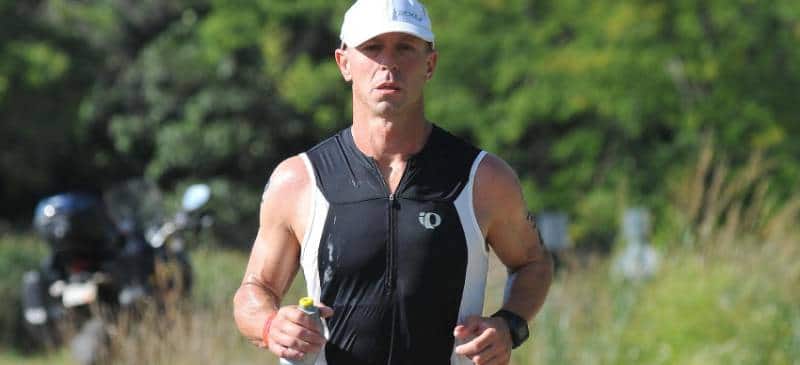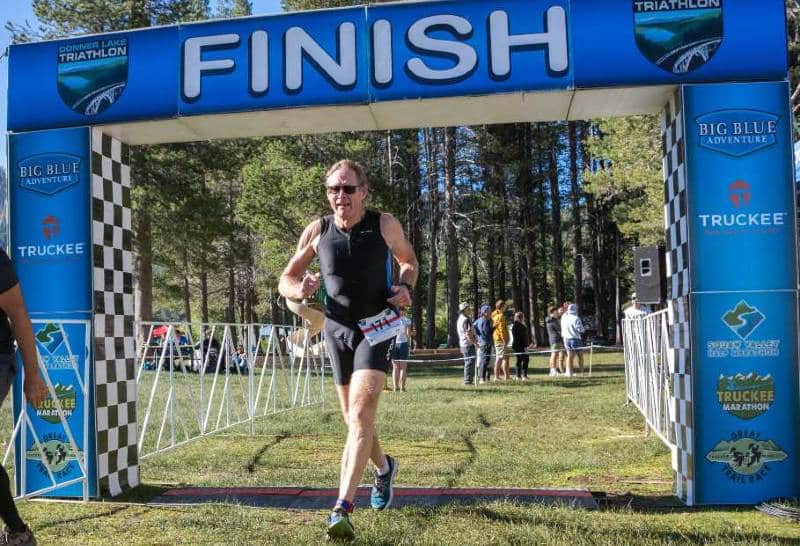Should You Choose Your Triathlon Distance Based On Body Type?
Does your body type make you better suited to compete at a particular triathlon distance? Are you better suited for sprint triathlons or for Ironman distance races?
I started wondering this after recently finishing a difficult training. This post summarizes what I learned while looking for an answer to this question.
In Search of the Ideal Triathlon Distance
Most of you know there are triathlons covering a wide range of distances – from super sprint to full Ironman 140.6. If you want to learn more, check out this post.
Over the past several years writing for SeniorTriathletes.com, I have spoken with many triathletes age 50 and over. Some have done sprint and Olympic distance races. Many have also done Ironman triathlons. Some have even done ultra-endurance events.
I recalled a conversation I had with a man, an Ironman triathlete, a spectator of my New Mexico triathlon. While waiting for the awards ceremony, he told me he preferred Ironman triathlons over sprint triathlons. He went further to tell me he disliked sprint triathlons, the reason he had not done this race.
Why? Because in a sprint triathlon, he felt pressure to push harder, that is, to literally sprint during the entire race.
Then, I remembered my conversation with Ironman Craig Cross. Craig believed his body was better suited for weightlifting than triathlon. Yet, he was doing Ironman triathlons.
I wondered if my body makeup made me better suited for sprint triathlons than the longer, endurance-based Ironman races. Or was my experience just a result of my training and the time I devoted to it?
Can Somatotyping Link Body Type and Ideal Triathlon Distance?
To answer this question, I turned to the internet. Here, I learned of somatotyping, a field of sports medicine and research involving characterization of body type. Somatotyping is also used to correlate body type to performance in various sports.
Interestingly, I found that many fitness trainers use somatotyping to tailor an individual’s training program to achieve a body type best suited for their particular sport.
Definitions
A few definitions will be helpful in following the information in this post and in your own research should you choose to go further into this topic.
Somatotypes – categories into which individual bodies are categorized according to their shape. A typical somatotype will include a ratio of each of the following three basic body types:
- Ectomorph characterized by a long and lean frame with little body fat and little muscle (think, ‘super model’). With a lean build, this body type may have an advantage in swimming due to reduced drag in the water. A lean frame may also lead to better aerodynamics on the bike.
- Mesomorph types have greater than average muscular development and, generally, a medium frame. Those with this type develop muscles easily and have more muscle than body fat. American football lineman are predominantly of this body type. They may also be excellent cyclists because of their ability to generate power.
- Endomorph types have a higher percentage of body fat and less muscle mass. Endomorphs are often heavier and have rounder bodies. However, this does not mean they are obese, though they gain weight more easily. With proper training, those with this body type are able to compete in triathlon.
Anthropometry is the systematic study and characterization of human body measurements. As illustrated in this paper, anthropometry involves a complex set of measurements and calculations based on these measurements. The output is a score representing the proportion of each of the three body types – ectomorph, mesomorph, endomorph – in an individual.
Body composition is a measure of the relative amounts of fat, bone, muscle, and water that make up one’s body. It is a more useful indicator of health than weight.
Body Type Affects Sports Performance
Sports medicine research has repeatedly documented that body type is an indicator, not guarantee, of performance in sports. For example, the body type of elite athletes varies between sports, as shown in this study comparing the body types of elite kayakers, football (soccer) players, and basketball players.
“Several studies have shown that body composition is related to higher performance in endurance sports, especially in sports where athletes must transport their body weight. Thus, for each kg of extra weight in the trunk, aerobic demand increases by 1%, and for each additional kg in the legs, aerobic demand increases by 10%.”
These studies have shown that a body type that reflects less weight based on fat mass leads to higher performance in sports that require endurance. This is especially true for sports that involve a lot of running. Less fat corresponds to higher VO2max values.
A big body type that is ectomorphic or mesomorphic is going to be much better at sprinting as these traits make people much stronger.
Shorter runners with thin body types tend to make better long-distance runners than taller runners as long and large legs make it difficult to lift and propel a body forward. Shorter strides and less weight tend to lead to greater speeds over long distances.
What Is The Perfect Body Type For Running
What About Body Type and Triathlon Performance?
Results of a study published in the European Journal of Sports Science concluded that body type is a significant factor for male Ironman triathletes while not one for their female counterparts.
This study, based on competitors of Ironman Switzerland, concluded the ideal somatotype for male Ironman triathletes is 1.7-4.9-2.8 (ectomorph-mesomorph-endomorph). Somatotype (body type) contributed to 28.6% of the variation in Ironman times.
“The endomorphy component was the most substantial predictor. Reductions in endomorphy by one standard deviation as well as an increased ectomorphy value by one standard deviation lead to significant and substantial improvement in Ironman performance (28.1 and 29.8 minutes, respectively).”
Similarily, an article titled “Physical and physiological factors associated with success in the triathlon” reported:
“Elite triathletes are generally tall, of average to light weight and have low levels of body fat, a physique which provides the advantages of large leverage and an optimal power to surface area or weight ratio.”
Other researchers have drawn similar conclusions from studies of body type and triathlon performance. In Changes in Triathletes’ Performance and Body Composition During a Specific Training Period for a Half-Ironman Race, the authors concluded from their review of prior research, “Body composition is also related to performance in endurance sports, including triathlons. An excess of body weight is especially disadvantageous in the run segment”.
The consensus appears to be that excess body fat correlates to lower VO2max, which leads to lower performance in endurance races, like triathlons.
Performance is Not Just About Body Type
The authors of Kenyan and Ethiopian Distance Runners: What Makes Them so Good? help us see that athletic performance is more than just about genetics. Environmental factors such as diet, where we live (in this case, altitude), and culture (active from a young age) influenced the runner’s body type.
The study also highlighted psychological influences within a culture which have led to the dominance of this group in distance running.
You Can Change Your Body Type Through Training and Diet
The study involving Ironman Switzerland triathletes mentioned earlier also concluded:
“Athletes not having an ideal somatotype of 1.7-4.9-2.8 could improve their performance by altering their somatotype. Lower rates in endomorphy, as well as higher rates in ectomorphy, resulted in a significant better race performance.”
How does one change their body type? In part, through training and diet.
The National Association of Sports Medicine (NASM), which provides training and certification for personal trainers, nutrition coaches, and many other fitness-related disciplines, provides recommendations for training and diet based on body type.
While your genetics may predispose you to a general body type that works against being an elite triathlete, you can change your body composition and type to improve your performance.
Reducing weight by reducing body fat is the first place to start. Developing upper body muscles for swimming and lower body muscles for the bike and run will lead to further improvement.
Is There An Ideal Triathlon Distance For Your Body Type?
I encourage first-time triathletes to first do a sprint triathlon. If you are like me, you fall in love with this distance and continue with it. However, many others aspire to longer distance triathlons.
Barring physical limitations that prevent you from training for a desired distance, you can go after your goal. It’s a matter of priority, of commitment.
You might not be the highest performing triathlete in your age group. However, neither you nor I can use body type as an excuse for not going after a triathlon goal.
What Triathlon Distance Do You Prefer? Why?
Let us know in the Comments (below) your favorite triathlon or other endurance sport distance and why you prefer it.





